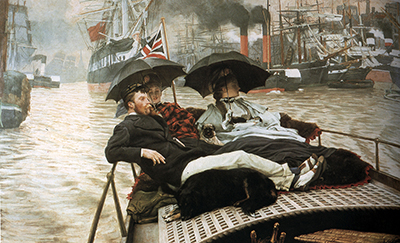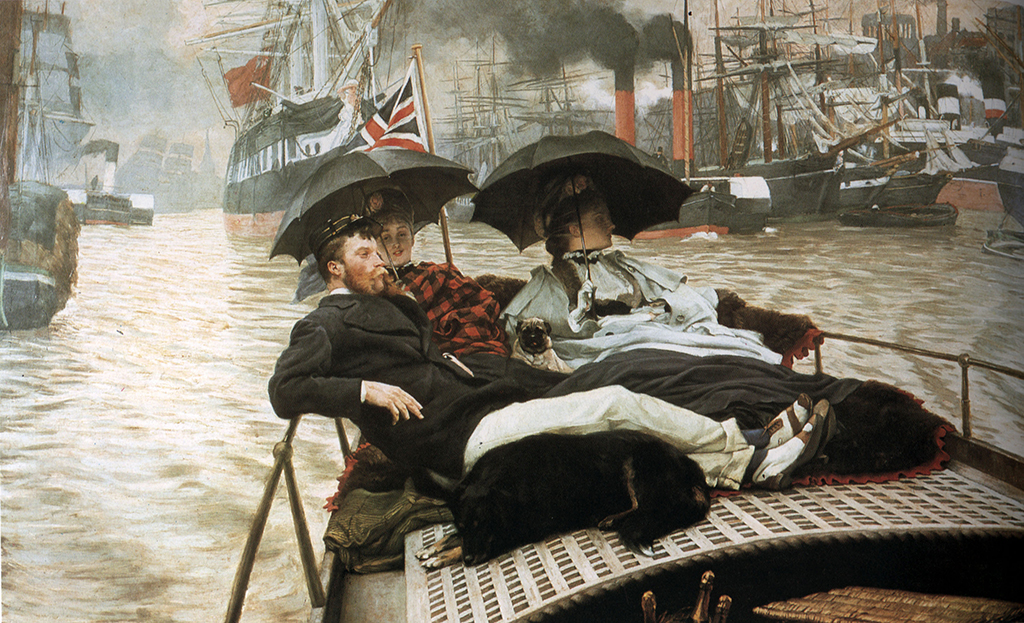This honest depiction of harbour life proved too much for some British critics when the artist completed it in 1876.
Many found this artwork dirty, both aesthetically, but also morally and felt a disappointment in it, as compared to some of the artist's earlier work. In the background we see various vessels pumping out flumes of smoke that add to the dark contrast found in this piece. The filthy Thames is similarly unappealing, and merely reflects the darkened light from above. Other than a few touches of white colour in the naval flags plus some lighter plumes of smoke, dark tones dominate throughout. In terms of the moral darkness, we find a navy officer flirting with two women in the foreground of the piece.
The officer, as most critics believe him to be, does not appear to be respectable in anyway and appears to be in the company of two equally questionable women for the afternoon. The picnic and champagne bottles suggest a time of fun, but at that time in British society, these types of people would not be to most people's taste. It is likely that sex and alcohol would have been on the menu that day, though one through today's eyes may well have a less judgemental opinion. Interestingly, this period of the 1870s marked the point at which the city of London started to make more of an effort to improve its own environment, clamping down on river pollution through several new acts of Parliament. There was also a general concern around air quality that was also starting to be listened to.
All-in-all, The Thames features an analysis of modern society and the honesty was simply too much for some. Whilst many acknowledged the reality of life in London, they did not want to see it depicted in art. This contrasts with how others had criticised the artist for only focusing on the rich and famous and ignoring the rest of society - sometimes an artist simply cannot win, and thankfully James Tissot was a strong minded individual who also was financially secure at this point in his career, and so would not have been as sensitive to criticism as others might have. Aside from the moral points, it is another fine example of the artist's understanding of maritime detail in art, something that he had developed and mastered at an early age in France, with him then simply adapting it to new vessels that he came across from then on.
Religious and social themes dominate the oeuvre of this artist, and many of the latter took place in and around boats and ships. He produced a memorable number during his time in the island nation of the UK, but learnt all of his technical knowledge in France as a young man. Some of his other maritime contributions included A Passing Storm, Ball on Shipboard and Boarding the Yacht. European artists have tackled maritime art in their droves for many centuries, but normally would depict mighty vessels from afar, often in the midst of an historical battle. Tissot was different in that he used these as rooms, essentially, of social activities and loved to portray his observations on modern life in his work.





